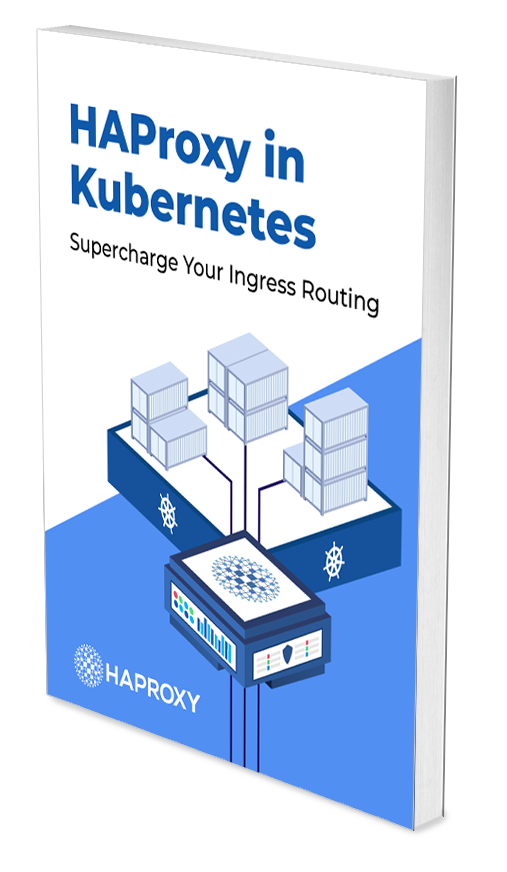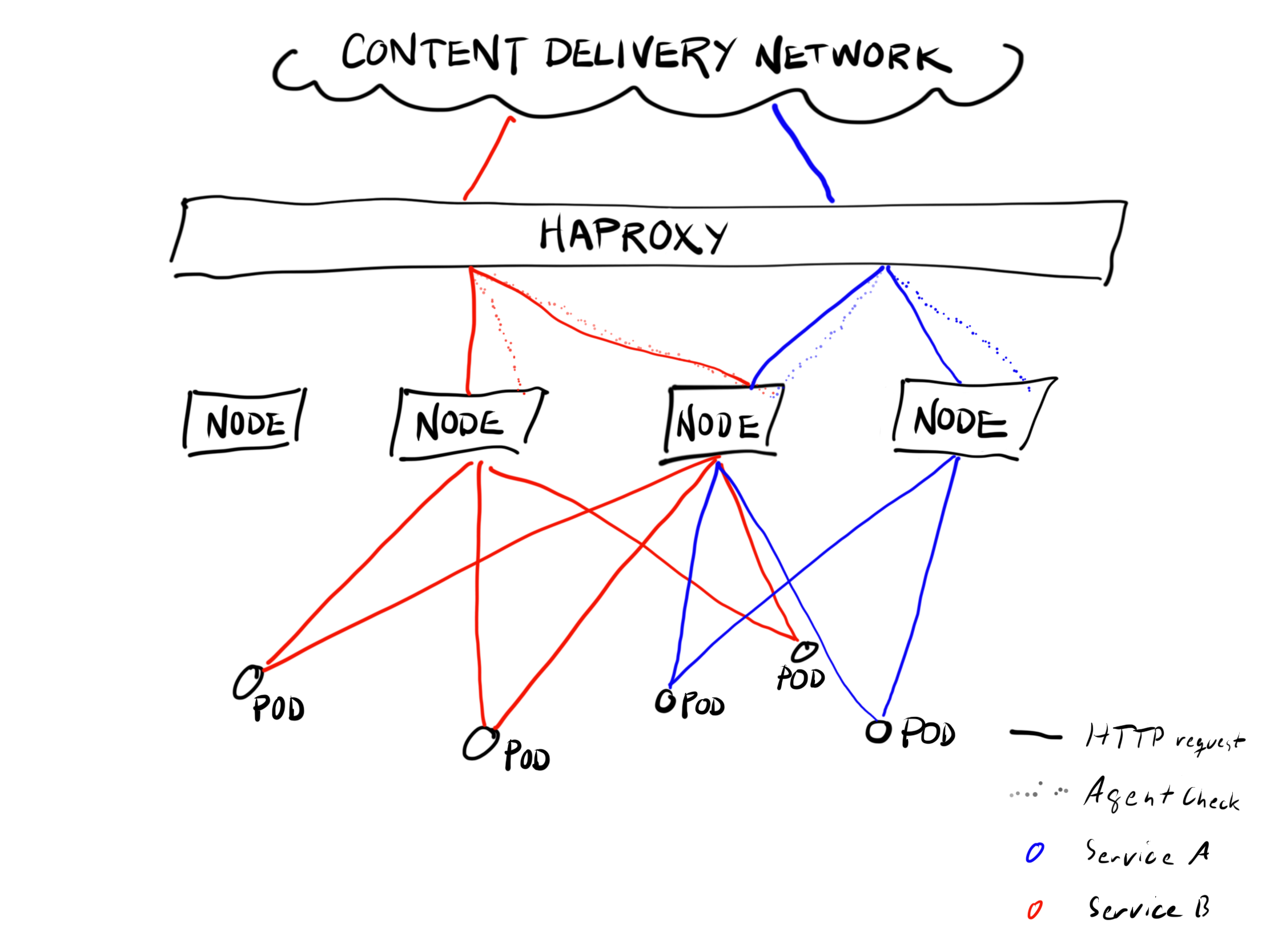
- #Install haproxy on kubernetes install
- #Install haproxy on kubernetes update
- #Install haproxy on kubernetes full
- #Install haproxy on kubernetes software
- #Install haproxy on kubernetes download
VSPHERE_HAPROXY_TEMPLATE: photon-3-haproxy-v1.2.4-vmware.1 VSPHERE_TEMPLATE: photon-3-kube-v1.18.3-vmware.1

Url: /root/.tkg/providers/control-plane-kubeadm/v0.3.6/control-plane-components.yaml Url: /root/.tkg/providers/bootstrap-kubeadm/v0.3.6/bootstrap-components.yaml

Url: /root/.tkg/providers/infrastructure-tkg-service-vsphere/v1.0.0/unused.yaml Url: /root/.tkg/providers/infrastructure-vsphere/v0.6.5/infrastructure-components.yaml Url: /root/.tkg/providers/infrastructure-aws/v0.5.4/infrastructure-components.yaml Url: /root/.tkg/providers/cluster-api/v0.3.6/core-components.yaml
#Install haproxy on kubernetes full
Now edit the config.yaml file in that folder: Example of my full YAML file: STEP 5: Deploy Tanzu Kubernetes Grid Management clusterįirst generate the config.yaml file on Linux VM: ~]# tkg get management-cluster Here’s an example of my vSphere, where I have created VM folder as TKG, and TKG1 – where both have kube and haproxy templates added to it. Follow the same step for haproxy OVA – photon-3-haproxy-v1.2.4-vmware.1.ova Right-click on the VM, select Template and click on Convert to Template
#Install haproxy on kubernetes software
Select the network for the VM to connect (Network segment created as a part of software specifications Select the datastore as (VMFS6 Datastore created as a part of software specifications) Choose the destination as resource pool – TKG1 (Resource pool created as a part of pre-requisites) Choose the destination as VM folder – TKG1 (VM folder created as a part of pre-requisites) Choose Local file, click the button to upload files, and navigate to the photon-3-kube-v1.18.3-vmware.1.ova file on your local machine. In the vSphere Client, right-click on cluster & select Deploy OVF template. STEP 4: Deploy OVAs & Create Templates in vSphere 6.7 U3Ĭonvert both ova (haproxy, kube) to templates and put them into a VM folder. Identity added: /root/.ssh/id_rsa (/root/.ssh/id_rsa) U+QKO9m6Enp6JvJVGyg6YBRs8N+i5QQrWprhxYzF/QnMOePdRbD4rpZsvH8KQg12/rrtLgLPzDcr2c7Efs+d8Vaa3jg0ZhHmaXSqaOcbylcxxSR+CGHfccpRs1kPlmtBkr2cįYaAFLY5jgF2UXy9lSiwGr1waY/CFxI10lHqL7Wv5nFm9DiujHyuLSnQ5Kk1q5+M7EsFgI/I+lk3edI/1+c1LfJSspk6dgO4LKtw2sd+MrgDFLaxFpnWFXnaou/faAc3xCUbĪj8zcYtUAgFdKQZEQ92uACApR4oTInk9OK0KvuDrMuuQLX9HCGunH7rkS3ADhQ= UI7U9U8LkGAxOaMQ93LshRokjFfFoShZjLgxxNrwvmBmoL5IegqOLsd8I7ZigKCkyGJk2PYvNfB6G/82udE6GdqLedwcilTVO6PkZXLXIVTBuk/cNruhYBcdgt+gfAyLWf4n Ssh-rsa AAAAB3NzaC1yc2EAAAADAQABAAACAQDveWLrtmqU+3ueNVrKcxZjEKuME3kmOa60iVGofTIE6X6kEzarSWEU1vVN2FWhO1D1sT0YooU/TiX2wODvkcKKdBBBQOP/Ĥ5lrvosVbOUM7LpprOOjfxwckXTbxPPune8toHX7MfjOTRAagyNUwX9Wztf2AhfzImD8tQudixNc+jCUrfICSxyfbqwBX2YbNQnAaQypkL+yuKjHoEjK+8juCU6SU/e42aWP SHA256:OEUW0NgtXubzbeuSnATjExnVhSdBr56Dd3VH3mOGzhw Your public key has been saved in /root/.ssh/id_rsa.pub. Your identification has been saved in /root/.ssh/id_rsa. STEP 3: Create an SSH Key Pair ON LINUX VM ~]# ssh-keygen -t rsa -b 4096 -C " "Įnter file in which to save the key (/root/.ssh/id_rsa):Įnter passphrase (empty for no passphrase):
#Install haproxy on kubernetes install
STEP 2: Install TKG CLI on Linux VM ~]# gunzip tkg-linux-amd64-v1.1.2-vmware.1.gz ~]# systemctl enable dockerĬreated symlink from /etc/systemd/system//rvice to /usr/lib/systemd/system/rvice. STEP 1: Installing Kubectl, Docker On Linux VM ~]# curl -LO `curl -s `/bin/linux/amd64/kubectl

#Install haproxy on kubernetes download
#Install haproxy on kubernetes update


 0 kommentar(er)
0 kommentar(er)
